Are you searching for a simple way to make and use Jadam Microorganism Solution? This short guide is for you.
JMS is the foundation of the Jadam Organic Farming system and is essential in producing healthy soil and plants.
It is simple to make and has many applications.
In this article, I’ll guide you through a basic 3-step process to creating JMS, as well as some ways to use the solution, ranging from soil aeration to organic pesticide!
Before You Get Started
Here are the items you’ll need to make 3 gallons or about 10 liters of JADAM Indigenous Microorganisms Solution (JMS).
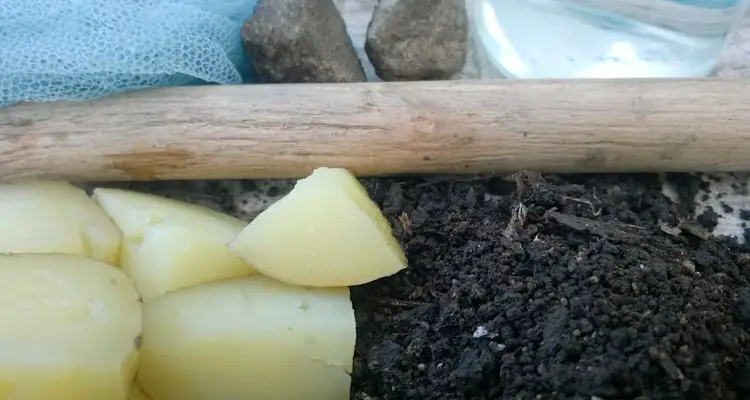
Note: You can modify the measurements to suit your needs.
| Items | Details |
| Potato | 1 small potato |
| Non-Chlorinated Water (Rain Water) | Allow tap water to rest for at least 24 hours |
| Sea Water or Sea Salt | 11 gm seasalt (~2 tsp) or 330 ml sea water |
| Leaf Mold | ½ cup or a handful |
| Bucket | 3 gallons bucket |
| Stick | To place across the mouth of the bucket |
| String | To suspend from stick |
| Mesh Cloth | loosely weaved material |
Additional: You’ll also need a watering can to apply the solution. However, a spray can works better for foliar application.
5 Steps To Make JADAM Indegenous Microorganism Solution (JMS)
1. Collect Ingredients
JMS makes use of Indigenous Microorganisms; these are microbes native to your area. You may already have the potato and sea salt in your kitchen.
- However, if you live close to the sea, you can collect some seawater. In some instances, this might be more convenient.
- You can collect Indigenous Microorganisms from a forested area near your farm or garden. You can find these microbes in the form of leaf mold: the soft powder-like earth found underneath a pile of leaves.
You can also cultivate leaf mold by allowing a pile of various types of leaves and grass clippings to break down naturally.
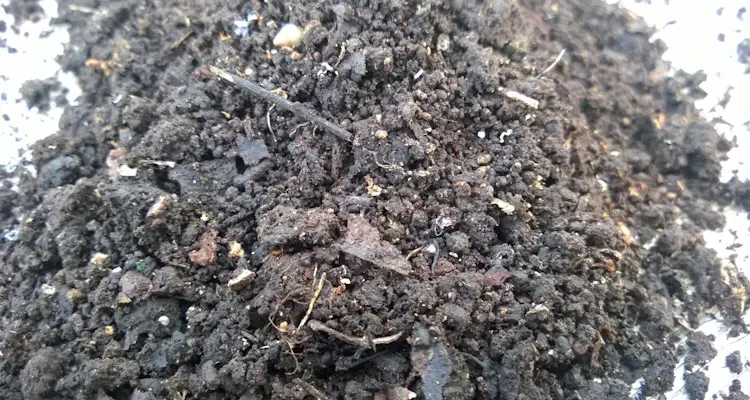
Do not be disheartened if there isn’t a distinct layer of leaf mold under the decomposing leaves; the microbes are there.
- Collect the thin layer of soil. Sometimes, you may even notice white thread-like substances. That’s a good sign of microbial activity.
- Collect some non-chlorinated water. You can collect rainwater or allow tap water to sit for at least 24 hours.
Now that you have collected the ingredients, it’s time to start the process.
2. Boil Potato
Potatoes are ideal media to culture the microbes. You can purchase them at most stores or grow them in your garden.
In case you’re wondering, you can also use sweet potatoes.
To culture a 3 gallons batch of JMS, you’ll need a small potato, about ¼ Lb.
Cut the potato into smaller pieces to speed up the process and save energy.
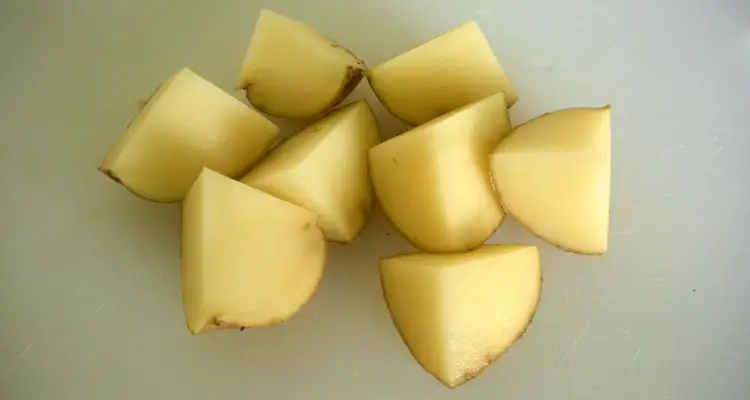
Boil potato in the skin until soft. You can pierce the potato with a skewer or fork to feel if it is ready.
After boiling, allow to cool.
3. Fill Bucket With Water
Fill a 3 gallons bucket with non-chlorinated water. Add 330 ml (1 ¼ cups) of seawater to the bucket of water.
Sea Water contains a host of minerals that is usually absent in the soil. By adding it to this solution, you also increase the biodiversity of microbes and replenish the leached minerals.
In my case, it was easier to collect rainwater during the rainy season but use spring water from the spring in my backyard during the dry season.
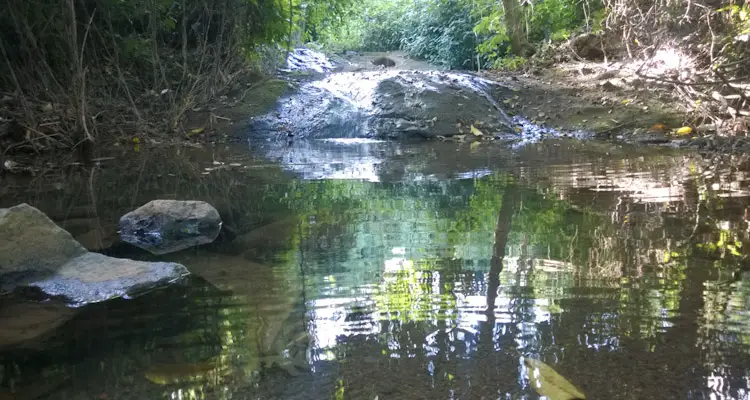
Before, it was much easier to collect seawater whenever I went to the beach or harbor. However, sea salt is more available at the local supermarkets as of late.
4. Add Ingredients To Water
With the water prepared, it is now time to add the other ingredients.
- Place the potato, leaf mold, and a small stone into the mesh cloth and tie with the string.
- Tie the piece of string to the stick and place it across the mouth of the bucket.
- Dip the mesh cloth into the water and gently massage it. Some of the content will start to ooze through the pores of the bag.
- Release the mesh cloth and allow it to suspend in the water from the stick.
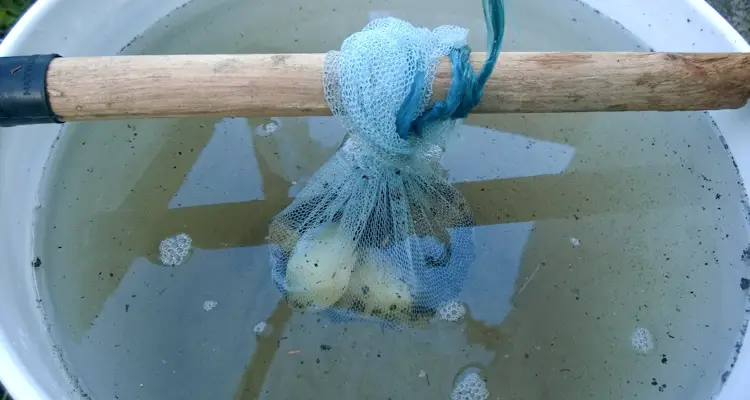
Lately, I have been blending the potato and adding it directly to the water. I got similar results from both methods.
Optionally: You can customize the JMS by adding plant material from the intended plant. For example, you can blend leaves from cabbages to make a JMS ideal for Cabbages. About ¼ Lb for this small batch.
5. Cover With Lid
Cover the bucket with the lid and allow it to rest close to where you intend to use the solution.
By cultivating the microbes in this location, you will ensure that the surviving organisms will be well suited to the growing conditions of that particular area: more specifically, the temperature.
You will notice some bubbles start to form within a few hours. The speed at which this occurs will vary considerably based on the temperature.
These bubbles are indications that the microbes are actively feeding and multiplying.
Within 36 to 72 hours, bubbles will cover the surface of the liquid. In some instances, the bubbles form rings originating from the suspended mesh pouch.
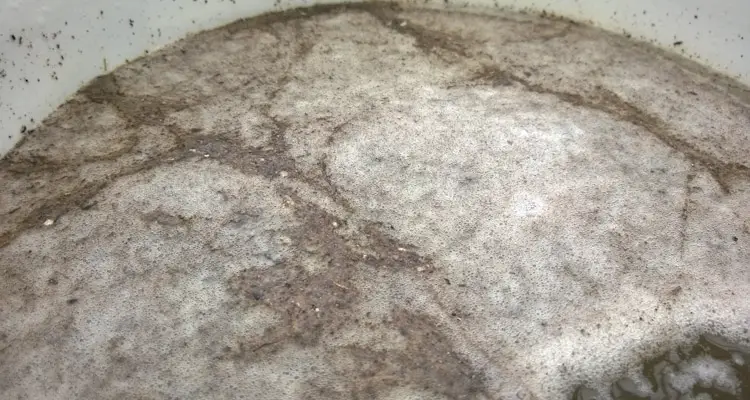
The average daytime temperature in my area is about 86°F and often crosses 90°F. As a result, this process takes about 24 hours to complete.
Important: You need to use the solution when it is most active. You have a 6 to 12 hours window before the bubbles start to break down, indicating a reduction in microbial activity.
Your batch of JMS is now complete and ready for you to use.
When To Use JMS
You can use JMS at various stages of plant growth: from soil preparation to fruiting.
Initially, JADAM recommends that the soil be drenched at least four times with the diluted JMS before planting.
This application allows the microbes to get enough time to be transported deep within the soil to do their work.
You can apply the JMS using a sprinkler system or before rainfall. You may also use a watering can for small areas.
After planting, you can apply diluted JMS each time you water, either to the soil or as a foliar application.
However, this can be time-consuming. So once a week should suffice to allow optimal levels of microbes within the soil. These microbes keep other organisms such as nematodes in check.
Note: During the dry season, I usually have to water plants daily but apply JMS weekly.
You can combine JMS with additional seawater, Phyllite Solution, and Wild Grass Liquid Solution to supply the soil with microbes, nutrients, and minerals.
Apply this solution once per week.
How To Use JADAM Microorganism Solution
As the name suggests, JADAM Microorganism Solution contains a lot of microbes. Reportedly, about 1 billion microbes per ml.
You will need to filter and dilute the solution before use. Dilute in the ratio of 1 part JMS to 10 parts water.
You can then apply this directly to the soil during the soil preparation stage.
However, you will need to dilute it to 20 part water if you wish to feed it to livestock or spray on the ground of their housing.
JMS helps with digestion in livestock and rapidly decomposes manure in the livestock housing, resulting in no strong odors.
You can create an organic pesticide by combining JADAM Microorganism Solution, Jadam Wetting Agent, Oriental Herbal Nutrient, and JADAM Liquid Fertilizer.
Note: I will go more in detail on formulation, among other things, in my article on JADAM Organic Pesticides
This foliar application coats the leaves, destroying any pest present, and provides a source of nutrients as it breaks down.
Benefits of JMS
JADAM Microorganism Solution is one of the cornerstones of the JADAM Organic Farming system.
One of the clear benefits is the price. You can make 500 Liters of JADAM for little more than the price of 1 Kg of potatoes: a tiny fraction of the cost of commercially available microorganism solutions.
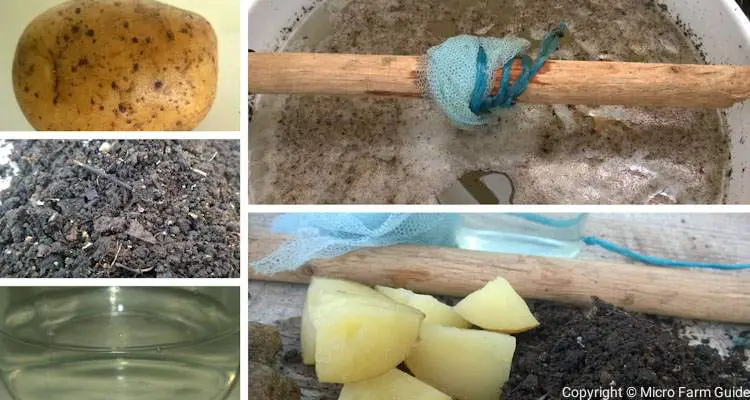
Price aside, its primary benefit is that of soil enhancement. Repeated use of JMS improves soil structure, removes soil contaminants, and restores the balance of soil organisms.
These actions result in healthy growing conditions for plants and greater yield for us.
As a surfactant, JMS also helps to balance organisms on leaves and stems of the plant resulting in resistance to fungal and bacterial infection.
The microbial activity of JMS helps to make previously bound nutrients and minerals accessible to plants, allowing them to make optimal use of less concentrated organic fertilizers, such as JADAM Liquid Fertilizers.
JMS eliminates most of the odors associated with livestock housing when used in conjunction with other management practices. You can enhance its effectiveness by alternating it with LAB from Korean Natural Farming. The byproducts save the farmer time and money while promoting healthy living conditions for animals.
Final Thoughts
JADAM Indigenous Microorganism Solution is the foundation of JADAM Organic Farming. It has similar functions to Korean Natural Farming’s IMO but differs in preparation.
It is easy to make and has multiple benefits. However, it has a short usage window which should be kept in mind when preparing.
JMS is well known for its ability to enhance the soil. However, its application in livestock housing sanitization, as well as pest and disease control, should not be overlooked.
Related Questions
Can JMS Be Made For Specific Plants?
You can customize JADAM Microorganism Solution by adding blended fruits, leaves, or other plant materials. Example blend cabbage leaves to make a JMS with microbes specific to Cabbage.
Can You Make JADAM Microorganism Solution without Potatoes?
You can use grain or other starchy foods, such as breadfruit, in place of potato. However, potatoes are more convenient, and as a result, are the default medium. Alternatively, you can choose to use only plant materials without the potato medium, but the process will be much slower.
References
JADAM. JADAM Organic Farming. Jadam.kr Accessed September 2021
Cho, Youngsang. JADAM Organic Farming: The Way To Ultra-Low Agriculture. Translated By Rei Yoon. JADAM. 2016
